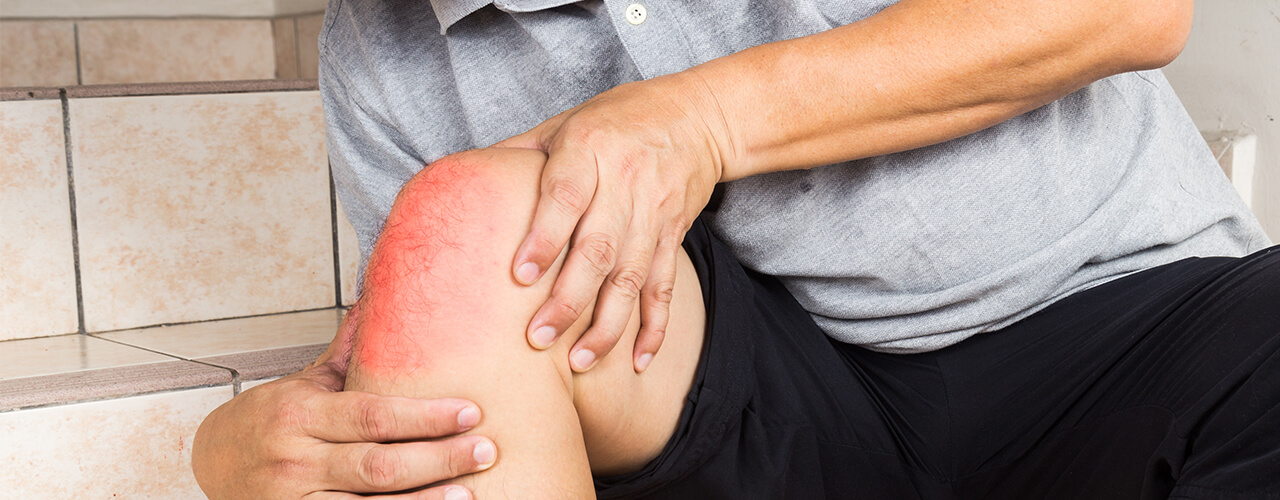Get Rid of Your Hip and Knee Pain With Our Safe and Effective Methods
Does instability in your hips and knees make you feel as if you may collapse without warning?
Do sharp pains in those areas make daily tasks challenging?
Is standing up after prolonged periods of time difficult for you?
If so, Physiomed can help.
It is no secret that hip and knee pain can create limitations in your daily life. With physiotherapy, you can relieve your pain in the easiest, safest, and most comfortable way possible. If you are looking to get rid of your hip and knee pain, contact us at (604) 879-7214 today to learn more about our safe and effective physiotherapy services!
Why do I have hip or knee pain?
The hips and knees are two very different types of joints: the hips are ball-and-socket joints that act as a support for your upper body weight, while the knees are hinge joints that allow for the forward-and-backward motions within the joint. Believe it or not, the knees actually support more of your weight than the hips do, as they allow you to stand, walk, run, dance, etc. Your hips and knees rely on numerous muscles and tissues to maintain their proper function and mobility, and when things aren’t working correctly, you may experience hip or knee pain.
People can experience hip and knee pain together or separately. The hip and knee joints work in together to provide the optimum function for the lower extremities; however, sometimes a condition resulting in pain with these joints can cause their function to go awry.
Sometimes hip or knee pain originates within the respective joint; however, it is also possible that the pain you feel in your hip or knee may be rooted in a different part of the body. For example, a problem with the hip joint may transmit a pain signal to the knees, and vice versa. Since the hips and knees are both parts of the same kinetic chain, they make up a combination of weight-bearing joints that must function together in harmony in order for your body and posture to function properly. If one part of the kinetic chain is out of balance, stress may be placed on another joint.
Common conditions leading to hip and knee pain:
The structures in your hips and knees are very similar, therefore they can be subject to many of the same injuries, stress, disorders, deterioration, and diseases. Some of the most common causes of hip and knee pain include:
Cartilage injuries.
Cartilage injuries can affect both the hips or knees. For example, hip pain can be caused by cartilage injuries known as labral tears, while inflammation of the bursa sacs, known as bursitis, is a specific condition that impacts the knee joint.
Acute injuries.
These are common in both hips and knees, such as sprains, strains, and dislocations.
Overuse injuries. Several overuse injuries, including muscle strains and tendonitis, are common in both hips and knees. This is because the joints both experience constant use.
Gait or stance imbalances.
These can cause abnormal stress and premature wear-and-tear on your hips and knees, which can result in painful symptoms of arthritis.
Weak or tight muscles.
If you have a weak gluteus medius muscles and tight hip flexor muscles, this can cause the hip to rotate inward without you realizing it. Because of this, abnormal stress can be put on the knees, resulting in painful conditions, such as patellofemoral stress syndrome or iliotibial band friction syndrome.
Referred pain.
Pain may also develop as a result of referred pain from a pinched sciatic nerve since the nerve travels through both areas.
Contact Physiomed today!
If you have one of the conditions listed above or a different condition that is causing your hip or knee pain, contact Physiomed today. One of our dedicated Vancouver physiotherapists will examine your hips and knees to check for any structural damage, in addition to evaluating your gait, stance, posture, and range of motion. This will help compile important information for creating the best possible treatment plan for your needs. Treatment plans will focus on relieving pain, normalizing joint function, and relieving any abnormal stresses on your hips and knees.
Your treatment plan will include targeted stretches and exercises, aimed at stabilizing any weak hip and/or knee tissues. You may be prescribed with additional treatments as our physiotherapist deems fit, including ice and heat therapy, massage therapy, laser therapy, or other soft tissue treatments. These are all aimed at alleviating your pain and promoting the healing of your damaged hip and/or knee tissues. If you have been limited by your hip and/or knee pain, schedule a consultation with our Vancouver physiotherapy office today. We’ll provide you with the best methods for getting rid of your pain, so you can get back to your life! We also can fit you for custom and non-custom knee braces!! For more information, Contact Us Today at Vancouver, BC Center.
Visit our Vancouver clinic location today to get started! Make an appointment now!
Read our blog post on consulting with a physiotherapist to find relief for hip and knee pain by clicking here!
FAQs
What causes knee pain?
Your knees are hinge joints that allow for the forward-and-backward motions within the joint. The knee is one of the largest joints in your body, made up of a complex system of bones, tendons, and ligaments. Because of this, the knee can be easily injured due to overexertion or repetitive motions. Additionally, knee pain can be caused due to an underlying ailment. Some of the most common causes of knee pain are sprains, strains, fractures, tears, dislocation, tendinitis, bursitis, and arthritis.
How long should knee pain last?
Some knee pain can ease on its own. However, if you notice persistent pain, you should contact a physical therapist. Many people try to push through the pain that they feel; however, this can actually cause an issue to worsen and become more problematic. Sharp or dull pain in the knee should be paid attention to and not pushed through. If pain persists, especially for three months or longer, it is in your best interest to contact a physical therapist, as that can be an indication of a chronic condition.
Is walking good for knee pain?
Knee pain can be debilitating, making it difficult to walk, run, and move. While exercise can certainly help heal the root cause of your knee pain, it is important to make sure to only do so under the discretion of your physical therapist. Your treatment plan will largely consist of targeted exercises and manual treatments; however, additional pain relief modalities may also be added as your physical therapist deems fit. This will help you improve any problem areas and prevent further injury from occurring.
What is the best therapy for knee pain?
Our licensed physical therapists will examine your knee for signs of misalignment or structural damage, in addition to examining your stance, posture, gait, and range of motion. After your physical exam is complete, your physical therapist will prescribe a physical therapy plan for you, aimed at relieving unnatural stresses and strains, and normalizing your joint function. Treatment plans for knee pain typically include activity modification, manual therapy, strength and capacity training, range of motion restoration, graded exposure to previously painful activities, and patient education regarding activity modification.



